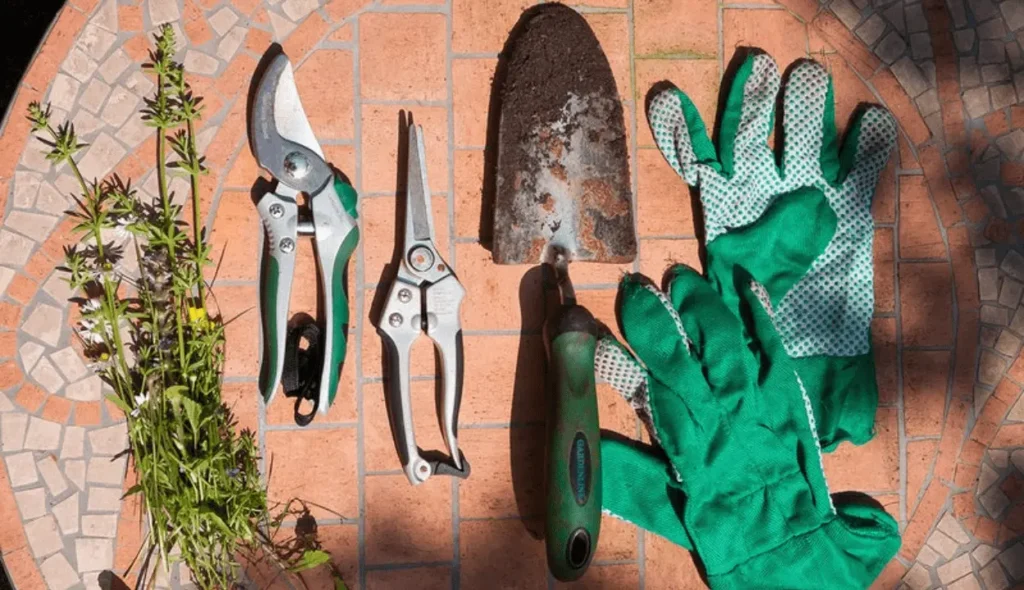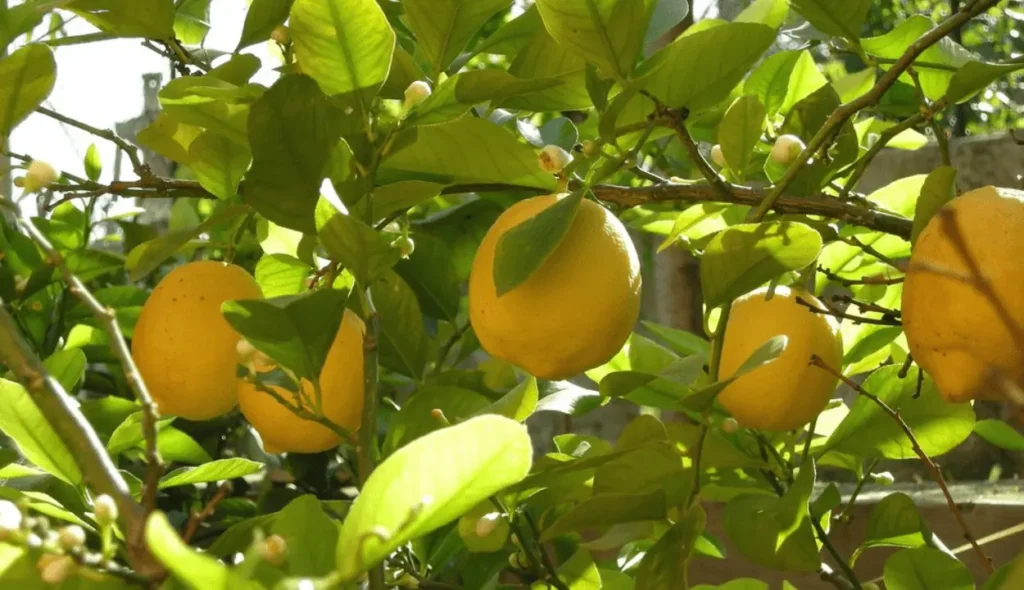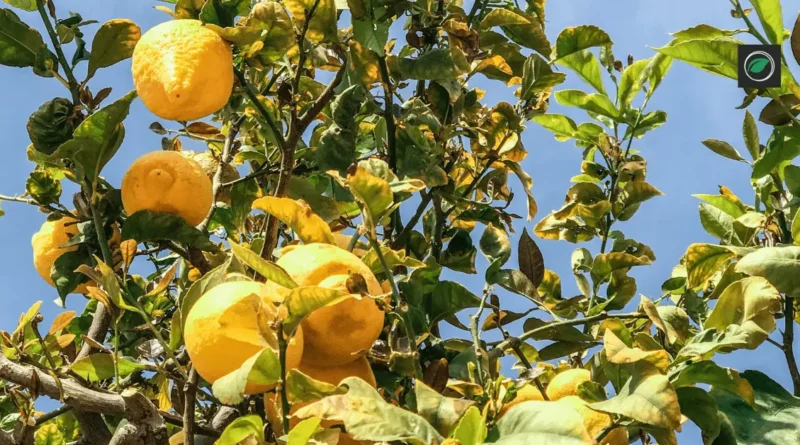Pruning Lemon Trees in Pots: A Step-by-Step Guide
A Beginner’s Guide to Pruning Lemon Trees in Pots
Lemon is a common household fruit tree because of its many health benefits. Lemon tree requires proper care and potted lemon tree pruning is an important part of care and maintenance. Pruning methods are essential for growing lemon trees that are robust and productive.
Lemon trees can benefit from pruning to maintain their size and shape, encourage healthy growth, enhance airflow, and boost fruit yield. Potted lemon tree pruning increases fruit production, so carefully trimming them is necessary. This article will guide you about pruning lemon trees in pots. |2024|

Table of Contents
Why Pruning Lemon Trees in Pots?
Potted lemon tree pruning has various beneficial effects. First off, it helps in the removal of diseased or dead branches, ensuring the tree’s general health and preventing the spread of illnesses. Second, pruning promotes the development of new branches and shoots, which increases fruit output.
Additionally, correct trimming increases the amount of airflow and sunlight reaching the tree, which lowers the risk of fungus and raises the quality of the lemons.
When is the Ideal Season for Pruning Lemon Trees in Pots?
The late winter or early spring, just before the start of the new growing season is the ideal time to prune lemon trees. Pruning now enables the tree to recover rapidly and make the most of the upcoming growing season for the emergence of new shoots. Avoid trimming when it’s cold or hot outside because it could stress the tree and hinder its growth.
Essential Tools for Pruning Lemon Trees In Pots
Before starting the potted lemon tree pruning process, it’s important to gather the necessary pruning tools:
Pruning shears: Used for cutting small branches and twigs.
Loppers: Ideal for cutting larger branches with a diameter of up to 1.5 inches.
Pruning saw: Necessary for removing thicker branches and limbs.
Gloves: Protect your hands from thorns and potential injuries.
Disinfectant: Use to sanitize your tools between cuts to prevent the spread of diseases.

Understanding Different Types of Pruning Cuts
To achieve optimal results, it’s essential to understand the different types of pruning cuts:
Heading Cut:
Removes a portion of a branch, stimulating new growth from the bud located just below the cut.
Thinning Cut:
Removes an entire branch or stem at its point of origin, promoting better air circulation and reducing the tree’s density.
Pinching:
Involves removing the terminal bud of a branch to encourage lateral branching and bushier growth.
Step-by-Step Guide to Pruning Lemon Trees In Pots
Assess the Tree’s Structure
Examine the structure of the lemon tree before pruning. Determine any branches that are sick, damaged, or dead and need to be cut off. Observe any branches that are touching or crossing over as these may hinder a tree’s growth.
Remove Dead or Diseased Branches
Start by removing any diseased or dead branches with a pair of sharp pruning shears. Just above the branch collar, which is the enlarged area where the branch joins the trunk, make clean cuts.
Prune Crossed or Rubbing Branches
Remove any branches that are touching or crossing over one another. These branches have the potential to graze skin and serve as entry routes for pathogens and pests. Remove the unhealthy branch and keep the healthier one.
Shape the Tree for Optimal Growth
Selectively prune the outer branches to preserve an attractive shape and promote even growth. Put your attention on pruning back branches or excessive growth that is growing outside of the ideal canopy size.
Manage the Tree’s Height
Use loppers or a pruning saw to prune your lemon tree back if it’s getting too tall. To encourage new growth and avoid ugly stubs, make cuts just above the bud or leaf node.
Thin Out Excessive Branches
To increase air circulation and sunshine penetration and lower the risk of fungal diseases, the internal branches should be pruned off. To make a canopy that is open and balanced, cut back weaker, crowded, or downward-growing branches.
Prune Suckers and Water Sprouts
The base or trunk of the lemon tree produces solid shoots called suckers and water sprouts. To divert the tree’s energy towards fruitful branches, get rid of them right away.
Caring for Pruned Lemon Trees
It’s important to provide your lemon tree with the right care after pruning. Ensure that it receives adequate amounts of nutrients, sunlight, and water. Keep a close lookout for any sickness or pest indications on the tree, and take the necessary treatment if necessary. Mulching around the tree’s base can aid in keeping moisture and prevent weed growth.
Common Mistakes to Avoid
While pruning potted lemon trees, be cautious of the following common mistakes:
Over-pruning: Excessive pruning can stress the tree and reduce fruit production.
Improper cuts: Make clean cuts at the correct angle to promote healing and prevent damage.
Neglecting sanitation: Disinfect your tools to prevent the spread of diseases.
Pruning during the wrong season: Avoid pruning during extreme weather conditions.

Conclusion
Potted lemon tree pruning is really important for keeping your trees healthy and happy in pots. Trimming away dead or crowded branches doesn’t just make the tree look better, it also helps new branches grow and encourages more lemons to grow. By carefully according to the thorough directions provided in this article, you can confidently do pruning lemon trees in pots. Always prune during the appropriate season, use the necessary tools, and take the proper care of your lemon trees.
FAQs
Why should I prune lemon trees?
Pruning lemon trees promotes tree health, removes diseased branches, encourages new growth, increases fruit output, improves airflow, and enhances fruit quality.
What tools do I need for potted lemon tree pruning?
You’ll need pruning shears, loppers, a pruning saw, gloves, and disinfectant to sanitize tools between cuts.
How do I make different types of pruning cuts?
There are heading cuts (stimulate growth from buds below the cut), thinning cuts (remove whole branches for air circulation), and pinching (remove terminal buds for bushier growth).
How should I care for pruned lemon trees?
Provide nutrients, sunlight, and water. Watch for pests or diseases and take action if needed. Mulch around the base to retain moisture and prevent weeds.
What common pruning mistakes should I avoid?
Don’t over-prune, make proper cuts, disinfect tools for sanitation, and avoid pruning in extreme weather conditions.
Can I use regular scissors for pruning lemon trees?
Lemon trees should not be pruned with regular scissors. Use of appropriate pruning shears, loppers, or a pruning saw is advised.




